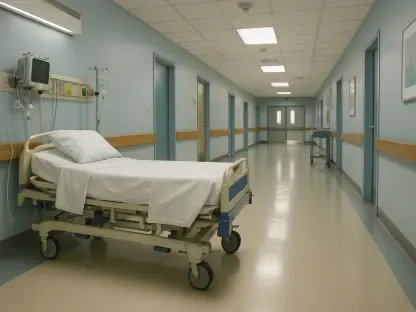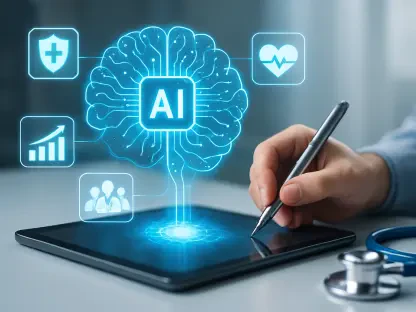Access to healthcare is a crucial issue globally and is a growing concern across the United States. Public health is a vital aspect of economic and community well-being, and the proliferation of medical deserts is a threat to families, communities, businesses, and national security. Strained and exacerbated by COVID-19, the American healthcare system cannot effectively serve the needs of close to 26 million people.
Among developed nations, America’s access to healthcare ranks poorly, with 33% of US adults opting to forgo care when needed. This is in stark comparison to population groups in the UK and Germany, which sit at 7%, and Sweden and the Netherlands at 8%. This phenomenon is known as the “US Health Disadvantage”. It highlights the unique position that America finds itself in as a global powerhouse that ranks last among the 11 wealthiest nations in the world.
For the US to remain a competitive nation, a healthy workforce is vital. In the past, healthcare deserts were restricted to rural and peri-urban areas but are increasingly creeping into major cities. In this article, we look at the causes of healthcare desert, their impact, and how to solve this looming public health crisis
What are Medical Deserts?
Medical deserts are regions characterized by low or no access to healthcare. This description includes access to facilities like hospitals and pharmacies, and healthcare professionals like primary care physicians and medical specialists.
Alarmingly, this is a growing phenomenon. In her work as a digital healthcare advocate, Tori Marsh, the Director of Research at GoodRx, has noticed that the definition of a medical desert applies to “at least one county in each state.”
In conducting further research on this matter, GoodRx published a whitepaper that revealed the true, dire state of healthcare access in the US. According to their research, a staggering 80% of US counties don’t have adequate access to healthcare services. According to Marsh, North Dakota and Alaska have large healthcare deserts, but these are not limited to rural communities. Part of what’s driving the inaccessibility is the rising cost of healthcare, which means that whole portions of the population are not seeking medical care because it’s simply unaffordable.
Another cause for this trend lies in dense populations. As more people flock to built-up urban areas and cities, the infrastructure remains the same while the population explodes. The pandemic was a clear indication of the severity of the urban healthcare desert crisis. During the height of the Delta variant, hospitals around the country were running low on beds, with some opting to send patients across state lines in helicopters and ambulances to seek care. “Just because you live in a very populated city doesn’t necessarily mean you have the infrastructure needed. It might mean that you have fewer hospital beds; it might mean there are not enough providers in your community,” Marsh explains.
Impact of Healthcare Deserts on Communities and the Economy
Healthcare deserts deeply impact the physical and financial well-being of communities. For people living in rural communities, their geographic location and small population play a significant role in perpetuating a lack of access to healthcare. They often have to travel long distances for basic care and access to specialists, delaying diagnosis and/or treatment. According to a report compiled by the American Hospital Association, less than 10% of healthcare professionals consult in rural areas, which are home to 20% of the American population.
People living in the cities are also impacted by medical deserts due to a lack of affordable healthcare. Patient Engagement Hit, a healthcare media company, looked into the effect of rising healthcare costs. They discovered that while high-out-of-pocket expenses all but ruled out effective healthcare for the uninsured, it also deters insured patients from seeking care. These effects are exacerbated when looking at marginalized communities, who are disproportionately impacted along racial and ethnic lines.
Compounding the issue is the existing inequality in the healthcare system for vulnerable and marginalized groups, which can often result in higher rates of preventable illness, death, and disease among these populations. The pandemic highlighted the devastating impacts of medical deserts. Facilities that ran out of beds diverted patients to city-based hospitals, straining capacity and access for residents requiring tests and treatment.
Tech to Solve the Issue of Medical Deserts
Technology is a powerful tool that healthcare providers can use to solve the medical desert crisis. Innovation can assist patients in managing lifestyle diseases better, detect illnesses earlier, and educate patients. Here are some of the ways that technology can be utilized to reduce the impact of medical deserts:
Telemedicine
For patients in remote areas, telemedicine is a great way to access primary care physicians and consult with specialists. Digital health check-ups are conveniently conducted in the patient’s home at a time that works for them, eliminating the need to travel long distances and request time off work. For physicians, virtual consults improve time management, enabling them to spend more time with each patient. Telemedicine has been used effectively for routine post-surgery checkups, basic primary healthcare diagnoses, and screening consults with specialists.
Electronic Health Records (EHRs)
Electronic health records are a central database of patients’ medical histories. It allows healthcare providers to access patient data across various locations, enabling patients to seek healthcare anywhere. This is also useful for patients in long-term or complex treatment pathways requiring multiple specialists to consult. Healthcare professionals can update patient data in real-time, ensuring that care teams have current information on hand. EHRs create a big picture of a patient’s medical and treatment history and, as a bonus, seamlessly integrate into telemedicine platforms. EHRs play a crucial role in increasing access to healthcare and provide vital information that healthcare organizations use to identify at-risk population groups, thanks to the wealth of medical data available.
Payments Technology
One of the lesser-acknowledged aspects driving poor access to health care is the payment and billing system. Hand-in-hand with the high out-of-pocket costs is the uncertainty of those costs, even with insurance. Cedar, a patient financial platform, conducted a survey looking at the impact of medical payments as a barrier to healthcare. While affordability is one aspect, the actual payment platforms and billing systems are an additional source of confusion. The 2024 Healthcare Financial Experience Study found that 58% identified paying medical bills as a source of stress, particularly when trying to understand what they owe and why.
37% of survey respondents also find it “extremely stressful” to reconcile billing issues with healthcare or health insurance providers. Another 40% said that it was even worse trying to reconcile between providers and insurers.
Innovative patient payment platforms can go a long way in reducing friction for patients and bill collectors. Mobile payment platforms are easy to use and provide a seamless experience for patients. Increased transparency in terms of bills and insurance coverage is also required to empower patients to make payments, as 40% of patients said they would not pay a bill they don’t understand or find difficult to pay. A further 28% mentioned they had delayed paying a bill because they were confused by it.
Artificial Intelligence and Predictive Analytics
Artificial Intelligence (AI) has powerful use cases in healthcare and can be used to close the gap in healthcare inequity. In telehealth, AI allows healthcare professionals to remotely monitor vital signs, pick up on changes, and receive alerts in emergencies. AI-powered analysis of patient data helps physicians identify at-risk patients for certain medical conditions; this enables them to provide preventative care and helps to better allocate resources in the system.
Conclusion
America finds itself in a unique position: a wealthy nation with an unhealthy workforce. If health is truly wealth, then the first part of that statement is no longer true. To secure the future of the US economy, the “US health disadvantage” needs to be overcome.
Medical deserts are a growing phenomenon. Previously believed to be an issue only experienced by rural communities, city dwellers are increasingly unable to access healthcare.
Experts highlight the crucial role technology can play in remedying the situation. With innovative tools like telemedicine and electronic health records, access to healthcare for rural communities can be significantly increased. For population groups that are “priced out” of healthcare, payment technology is used to overcome the barrier posed by paper statements, while AI and predictive analytics allow healthcare professionals to monitor patients remotely.
In the pursuit of true wealth, the US healthcare system needs to look to technology to eradicate medical deserts and improve the public health of the workforce. In the wise words of Paul Dreschler, Chairman of global shipping company Bibbly Line Group, “Good health IS good business.”









